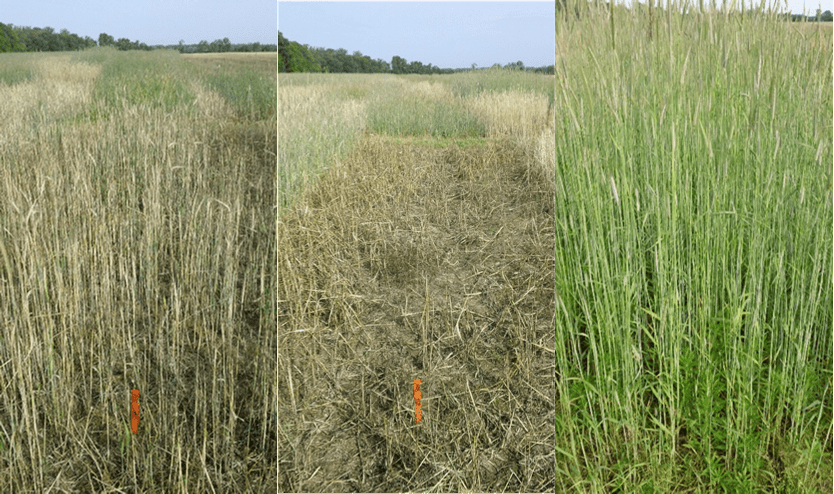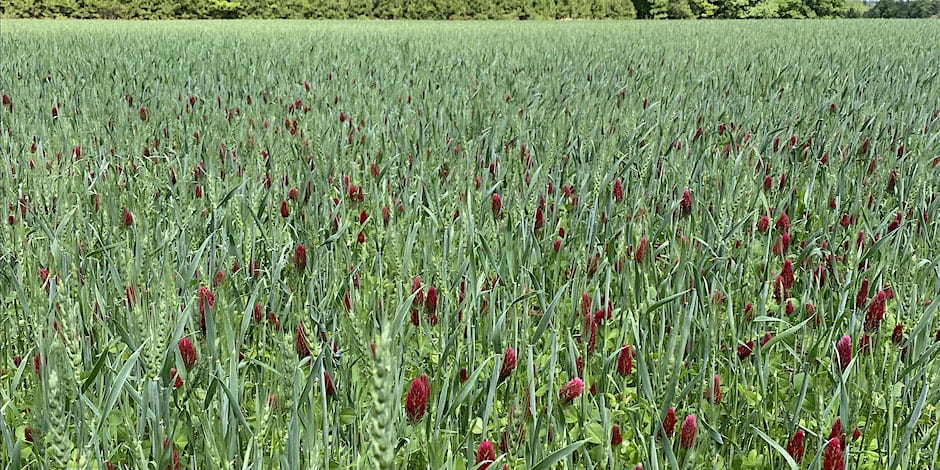Emily Zobel, Senior Agriculture Agent Associate | ezobel@umd.edu
Dwayne Joseph, Agriculture Agent; and Haley Sater, Agriculture Agent
University of Maryland Extension

There is emerging concern among growers on the Eastern Shore of Maryland that our warmer winters and longer cover crop growing season may allow several stink bug species to overwinter and utilize cover crops for shelter and food. These stink bugs could then move into soybean fields after cover crop termination, potentially causing feeding injury and damping off damage to soybean seedlings. Fall-planted cover crops offer many benefits to soil health and the environment, so a survey was conducted during the 2024 growing season to investigate whether cover crops provide a suitable overwintering habitat for stink bugs.
Species of phytophagous stink bugs that are known economic pests of soybean include the brown stink bug, Euschistus servus (Say), green stink bug, Acrosternum hilare (Say), and the brown marmorated stink bug (Halyomorpha halys). Stink bugs use their piercing-sucking mouthparts to feed on the foliage and pods of soybeans, causing discolored, shriveled beans, reducing both the yield and quality of the crop.
Stink bugs typically overwinter as adults in protected areas such as fence rows, grassy field borders, under stones, or tree bark. Most species have one generation per year. They become active during the first warm spring days, typically in April. Females usually start depositing eggs in June. Nymphs hatch from these eggs and pass through five instars before becoming adults, with approximately five weeks elapsing between hatching and adult emergence. Adult stink bugs generally reach their highest population levels in September, when they can become an economic problem for soybeans.
To determine if stink bugs use late-season cover crops as overwintering habitat, 37 cover crop fields were sampled on the Eastern Shore of Maryland between mid-April and mid-May. The majority of fields surveyed were planted in a wheat-only cover crop. Densities of adults and nymphs were determined by taking ten sweeps with a standard sweep net at five to ten areas across each field. Fourteen fields were sampled twice before the cover crop was terminated. The other fields were sampled once due to weather constraints before terminating the cover crop. Eight fields were sampled again in June when soybean plants were 6-12 inches high.
Ninety-nine stink bugs were counted across the 51 scouting times, averaging 1.94 stink bugs per field per scouting date. 94% of the species counted were adult native brown stink bugs. The majority of stink bugs (79%) were counted during the last week of April and the first week of May. Along with stink bugs, 225 ladybird beetle adults and larvae were counted. Fifteen stink bugs were found during the scouting of soybean seedlings in June. The low number of stink bugs found in 2024 in spring cover crops suggests they are not overwintered in cover crops, and adding an insecticide to cover crop burndown spray is unnecessary to control them.
We want to thank all the farmers who allowed us to sample their fields. If you are interested in participating in this study in 2025, please contact Emily Zobel at ezobel@umd.edu or (410) 228-8800. The Maryland Soybean Board provided financial support for this project (project # 80333).




